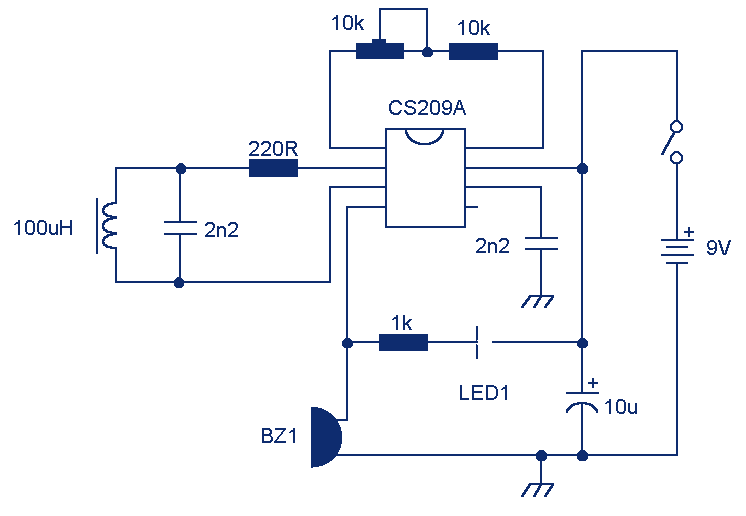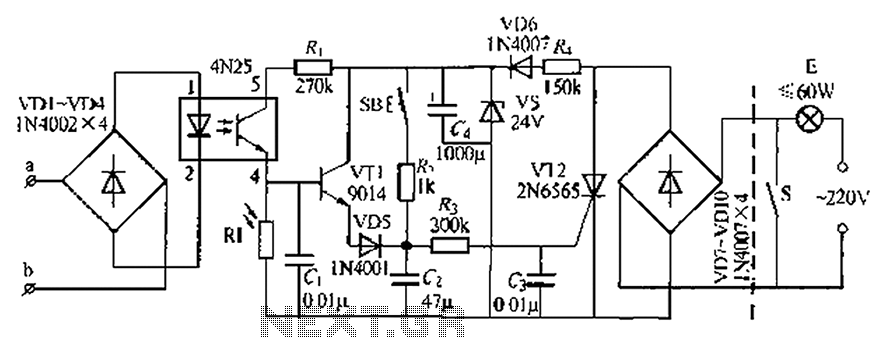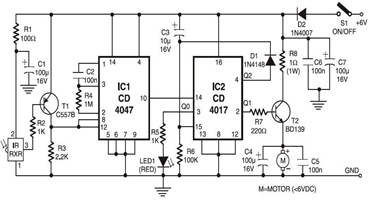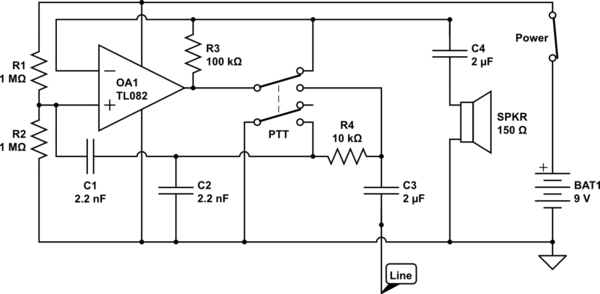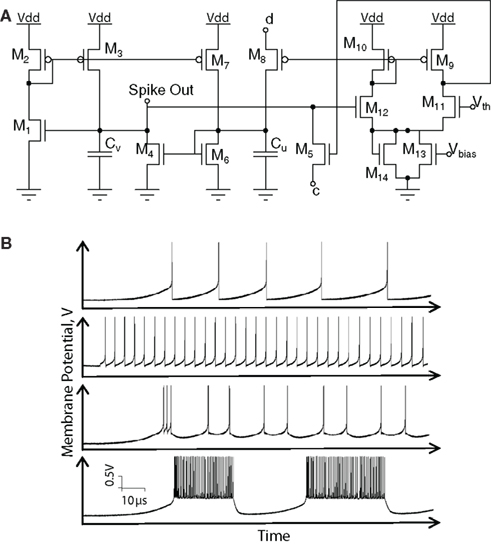
Portable alcohol detector alarm circuit

The QM-NJ9 is an alcohol sensor that detects the presence of alcohol by measuring the resistance values between points A and B. When alcohol is detected, the resistance decreases, leading to an increase in potential at point B. As the concentration of alcohol rises, the potential at point B also increases. This voltage signal is output through a sensitivity adjustment potentiometer, which slides the arm to adjust the resistance, and is then fed into a dual voltage comparator, specifically the LM358, at pins 3 and 6.
The QM-NJ9 alcohol sensor operates on the principle of resistive sensing, where the sensor's resistance changes in response to the presence of alcohol vapors. The sensor consists of a sensitive material that reacts chemically with alcohol, resulting in a change in its electrical resistance. The circuit is designed to monitor this change in resistance and convert it into a measurable voltage signal.
The adjustment potentiometer allows for calibration of the sensor's sensitivity, enabling the user to set a threshold level for alcohol detection. The output voltage from the potentiometer is fed into the LM358 dual voltage comparator, which is configured to compare the sensor's output voltage against a reference voltage. The LM358 is a versatile operational amplifier that can be used in various configurations, including as a comparator.
In this application, the comparator's output can be used to trigger additional circuitry, such as an alarm or indicator light, when the alcohol concentration exceeds a predefined level. The use of the LM358 allows for precise monitoring and response to changes in alcohol concentration, making the circuit suitable for applications such as breath analyzers or alcohol detection systems in vehicles.
Overall, the QM-NJ9 alcohol sensor circuit provides a reliable method for detecting alcohol levels, with adjustable sensitivity and the capability to interface with other electronic components for further processing or alerting functionalities.Circuit works: QM-NJ9 is alcohol sensor. QM-NJ9 contact after the odor of alcohol, the resistance value A, B between the reduced potential accounting point rise. The more alcohol concentration, the higher the B point potential. This signal voltage by a sensitivity adjustment potentiometer output Rp slide arm out, was added to a dual voltage comparator LM358 3,6 feet.
The QM-NJ9 alcohol sensor operates on the principle of resistive sensing, where the sensor's resistance changes in response to the presence of alcohol vapors. The sensor consists of a sensitive material that reacts chemically with alcohol, resulting in a change in its electrical resistance. The circuit is designed to monitor this change in resistance and convert it into a measurable voltage signal.
The adjustment potentiometer allows for calibration of the sensor's sensitivity, enabling the user to set a threshold level for alcohol detection. The output voltage from the potentiometer is fed into the LM358 dual voltage comparator, which is configured to compare the sensor's output voltage against a reference voltage. The LM358 is a versatile operational amplifier that can be used in various configurations, including as a comparator.
In this application, the comparator's output can be used to trigger additional circuitry, such as an alarm or indicator light, when the alcohol concentration exceeds a predefined level. The use of the LM358 allows for precise monitoring and response to changes in alcohol concentration, making the circuit suitable for applications such as breath analyzers or alcohol detection systems in vehicles.
Overall, the QM-NJ9 alcohol sensor circuit provides a reliable method for detecting alcohol levels, with adjustable sensitivity and the capability to interface with other electronic components for further processing or alerting functionalities.Circuit works: QM-NJ9 is alcohol sensor. QM-NJ9 contact after the odor of alcohol, the resistance value A, B between the reduced potential accounting point rise. The more alcohol concentration, the higher the B point potential. This signal voltage by a sensitivity adjustment potentiometer output Rp slide arm out, was added to a dual voltage comparator LM358 3,6 feet.
